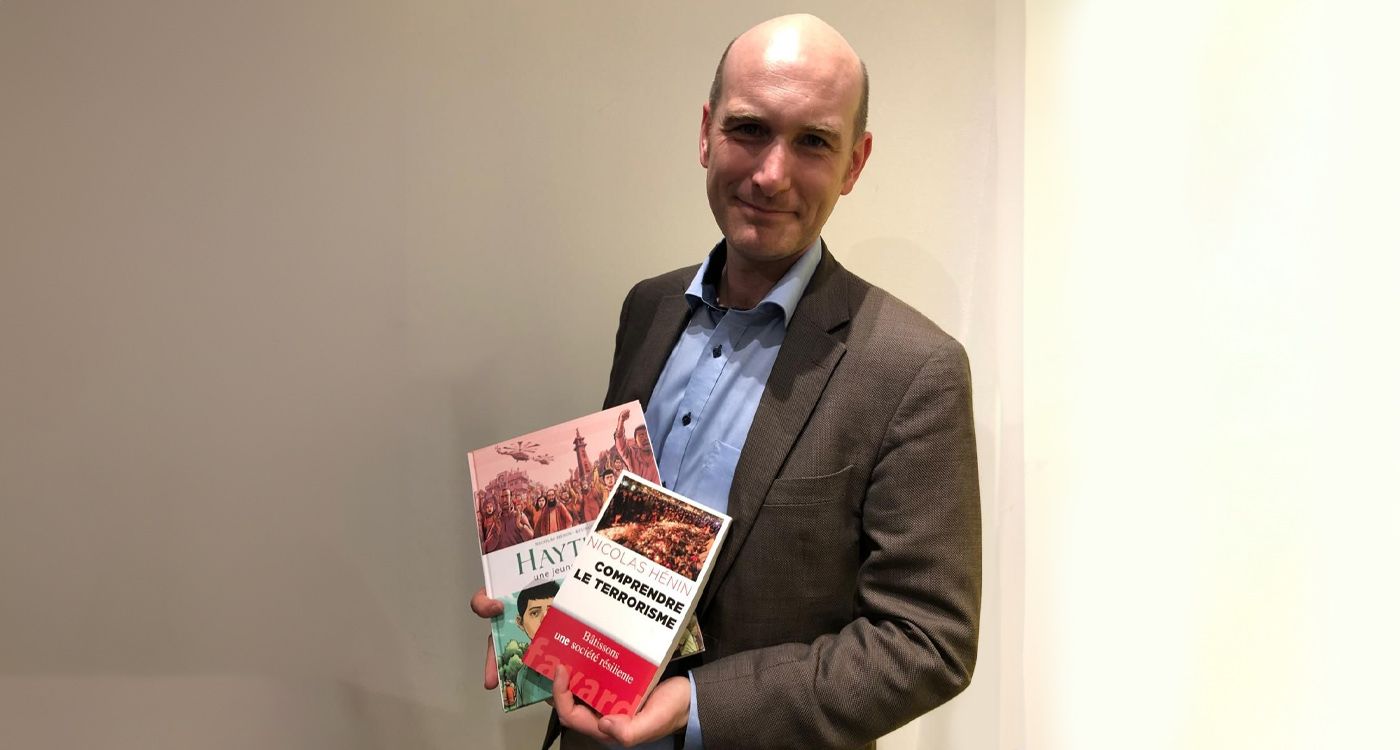- Home
- Middle East
- Nicolas Hénin on the ISIS Defendants’ Denial: “A disturbing dual role”

Ten years after his captivity, Nicolas Hénin testifies at the trial of his former jailer, Mehdi Nemmouche, and four other ISIS jihadists and executioners. In an exclusive interview with This is Beirut, he discusses the beginning of the trial, terrorist ideology, and the significance of justice in confronting barbarism.
The trial opened on Monday, February 17, 2025. Nicolas Hénin, a former hostage of Daesh, faced his jailer Mehdi Nemmouche in a French court. Nemmouche, already convicted for the attack on the Jewish Museum of Brussels, is now on trial for the kidnapping and detention of 27 Westerners in Syria between 2013 and 2014. Among them, four French journalists, including Hénin, suffered violence at the hands of a methodical torturer.
During his testimony, Hénin recalls months of detention marked by torture and the executions of several fellow detainees, including his friend James Foley, who was beheaded by jihadists. He also speaks of Nemmouche’s sadistic cruelty, describing him in his article Nemmouche and Me as a tormentor devoid of real religious conviction, preferring to hum Douce France between torture sessions.
Ten years later, Hénin refuses to give in to hatred. He advocates for justice, not revenge, convinced that words alone can counter jihadist ideology. Since his release, he has worked to raise awareness among young people about the dangers of radicalization, emphasizing the importance of humanity in the face of barbarism.
In an exclusive interview with This is Beirut, Nicolas Hénin offers an unfiltered account of the trial proceedings and the stance of the defendants.
‘A Disappointing Trial’
From the very beginning of the hearings, the former hostage voiced his frustration with the jihadists’ behavior in the box: “As we speak, the trial is underway. Before it started, I hoped for a revelation of the truth. But the beginning of the trial was deeply disappointing, as the defendants largely remain in denial.”
Why this refusal to take responsibility for their actions? Hénin wonders: “I struggle to understand this denial. It seems, at least for some of them, like they want to have it both ways. On one hand, they seek to gain the reputation of a ‘super-terrorist,’ claiming the status of a crime champion within their circles – through propaganda or the notoriety they could acquire in prison. On the other, in the courtroom, they nearly try to pass themselves off as innocent. This dual stance is disturbing.”
Is there hope for a shift in perspective as the hearings continue? Once again, the former hostage remains skeptical: “At this stage, they don’t seem willing to take responsibility for their actions. I hope to hear some explanations as the trial progresses, though I remain pessimistic, as any statements would only expose their contradictions.”
Fear as a Terrorism Tool
In addition to being a tool of domination, fear is a well-established strategy used by terrorist organizations. Hénin recalls the very essence of the word: “Fear is both the origin and the root of the word terrorism, as well as its modus operandi and the desired final effect. What they want is to spread fear. They aim to provoke a reaction of hatred so that we respond by renouncing our own values.”
Propaganda plays a central role in this mechanism. So, how can we engage with these unbearable images without falling into their trap?
“This fear is mainly instilled through propaganda. That’s why these images must be handled with the utmost care. They should not be used recklessly, as they were intended to induce a specific reaction.”
The trial also sparked a sensitive debate: should the video of James Foley’s execution be displayed?
“Several lawyers representing executed hostages were in favor of its release. I, on the other hand, was hesitant. Not because it’s not important to report the abuses and crimes committed realistically, but because the presentation must be as clinical and emotionless as possible. My testimony is clinical, my statements are clinical, while propaganda videos are not. They exaggerate emotion and present the atrocities in a way designed to provoke fear.”
Terrorism that Targets Social Divides
Rather than being an isolated phenomenon, terroris exploits existing divisions within targeted societies. According to Hénin, ISIS, like previous groups, has systematically studied these fault lines to exploit them more effectively.
“The division is the goal of terrorism. When a terrorist group prepares a campaign, it starts by analyzing the existing fault lines in society and aims to amplify them.”
He cites several examples: “That’s what Zarqawi did in Iraq, exploiting the growing divide between Shiites and Sunnis, or what ISIS did in Egypt, targeting Christians in Upper Egypt. They understood how to leverage local tensions to create deep divisions.”
In response to this strategy, what is the best approach? “The best response to terrorism is to work toward societal cohesion. A terrorist attack is a stab in the back, much like a conventional war. And in war, maintaining morale and cohesion is crucial.”
A call for unity that contrasts sharply with the cycle of hatred sought by terrorists.
“Hatred is a trap.” After an attack, one of the greatest dangers is falling into its grip. But for Hénin, succumbing to this emotion means playing into the hands of the terrorists. “Hatred is a zero-sum game. It’s not: ‘I hurt you, so one wins and the other loses.’ No, it’s: ‘I hate you, but this hatred will also destroy me’.”
To make his point clearer, he draws a striking comparison: “If we asked a caricaturist to draw a hateful man, it would be someone very ugly. And I have no desire to look like that.”
However, rejecting hatred doesn’t mean avoiding the fight. “One can effectively combat an enemy without feeling hatred. This is exactly what is taught to soldiers: they are trained to fight, to respect international humanitarian law, but never to hate. Hatred is not a strength; it doesn’t provide anything.”
So, what is the alternative? “Justice remains our best weapon against these criminals.”
A Brief Overview: Who Is Nicolas Hénin?
A French journalist specializing in the Middle East, Hénin was kidnapped by ISIS in Syria in 2013 and held for ten months before being released in 2014. Since then, he has been actively involved in preventing radicalization and countering jihadist propaganda. The author of several books, including Jihad Academy and Understanding Terrorism, he analyzes the mechanisms of terrorism and the strategic mistakes made by governments.
A recipient of the May Chidiac Foundation Prize for Courage in Journalism, Hénin regularly speaks out to raise awareness about the dangers of extremism and promote social cohesion.
Read more





Comments